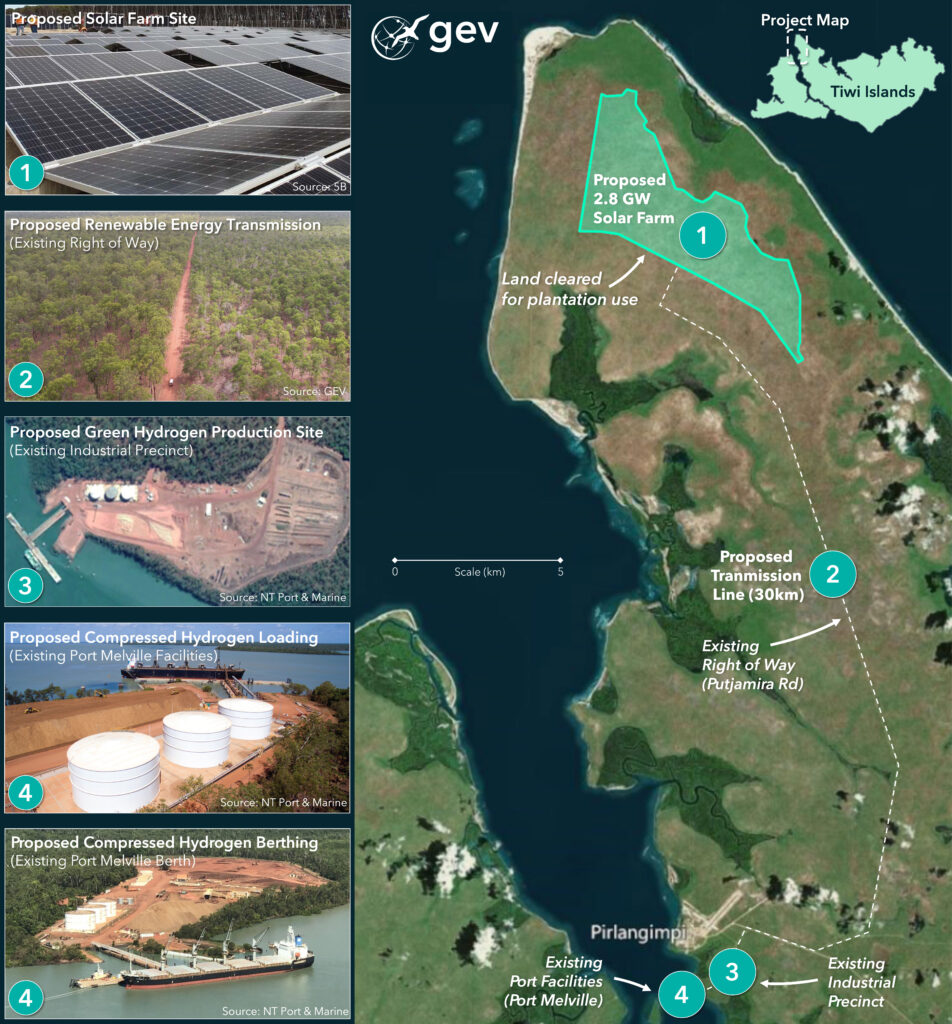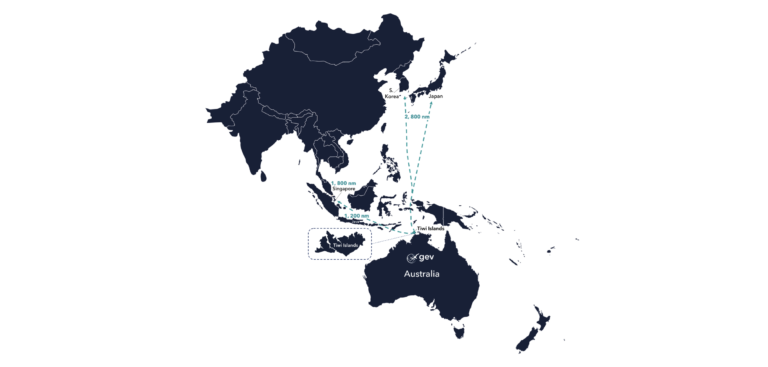The development of a 2.8GW green hydrogen export project integrated with compressed hydrogen shipping has been announced by GEV and is set to be located on the Tiwi Islands, Northern Territory, Australia.
The Tiwi Hydrogen Project will involve a staged construction with an initial development phase of ~0.5GW of installed solar generation; once the regional hydrogen market grows, this will be expanded to 2.8GW. It will be capable of producing 100,000 tons of green hydrogen per annum for export.
“Our compressed shipping solution is highly modular and can therefore scale to match the advancement of electrolyzer technologies and market demand for pure green hydrogen gas, and deliver a competitive cost of hydrogen as the project scales,” commented Martin Carolan, managing director and CEO, GEV.
The project will utilize GEV’s compressed hydrogen shipping solution, meaning no onshore hydrogen storage and only minimal battery storage are needed. The compression method will be used to load, store and transport hydrogen to avoid the complicated and costly process of packing and unpacking pure hydrogen gas required by carriers such as LH2, NH3 and LOHC.
The Tiwi Islands were chosen because of other emerging hydrogen markets based across Asia-Pacific, including Singapore, Indonesia, South Korea and Japan, providing GEV with a strategic location for the regional shipping sector. The proposed facility will cover 1,800ha and will benefit from the islands’ high solar intensity.
“With our world-class solar resources and our proximity to key export markets, the Northern Territory is an ideal place to generate renewable hydrogen to meet the future demand within our region,” commented Hon Eva Lawler, Northern Territory Government Minister for Renewables and Energy. “We look forward to supporting GEV through our investment facilitation team to progress the project through to operation.”
Major benefits of the project include the availability of and access to existing port infrastructure and the industrial precinct at Port Melville, South Barlow Point, Australia. The port is capable of berthing GEV’s 430-ton compressed-hydrogen pilot-scale ships. GEV will also introduce the company’s full-scale 2,000-ton ships as demand grows.
To reduce the environmental impact of the project, the proposed solar site will be based on an existing plantation, previously cleared of native vegetation.
“GEV has worked closely with key Tiwi stakeholders to ensure the project will have a low environmental impact on the Tiwi Islands,” said Garry Triglavcanin, executive director and chief development officer at GEV. “This has been achieved by selecting previously cleared and developed plantation land for the solar farm, existing right of way for the transmission line, as well as locating the hydrogen production facilities at an existing industrial precinct, adjacent to existing port infrastructure for export. GEV has completed a pre-feasibility level analysis that has identified this location as being highly suited to our compressed hydrogen shipping solution due to its close proximity to Asia-Pacific markets.”
Moving forward, GEV will work with NT Port and Marine to integrate Port Melville’s operations and facilities into the Tiwi Hydrogen Project. The company is also planning to carry out a full feasibility study that will gather information on the project development schedule, the project scale and its solar monitoring activities. A financial investment decision is due in 2023, with the first hydrogen export scheduled to take place in 2026.




